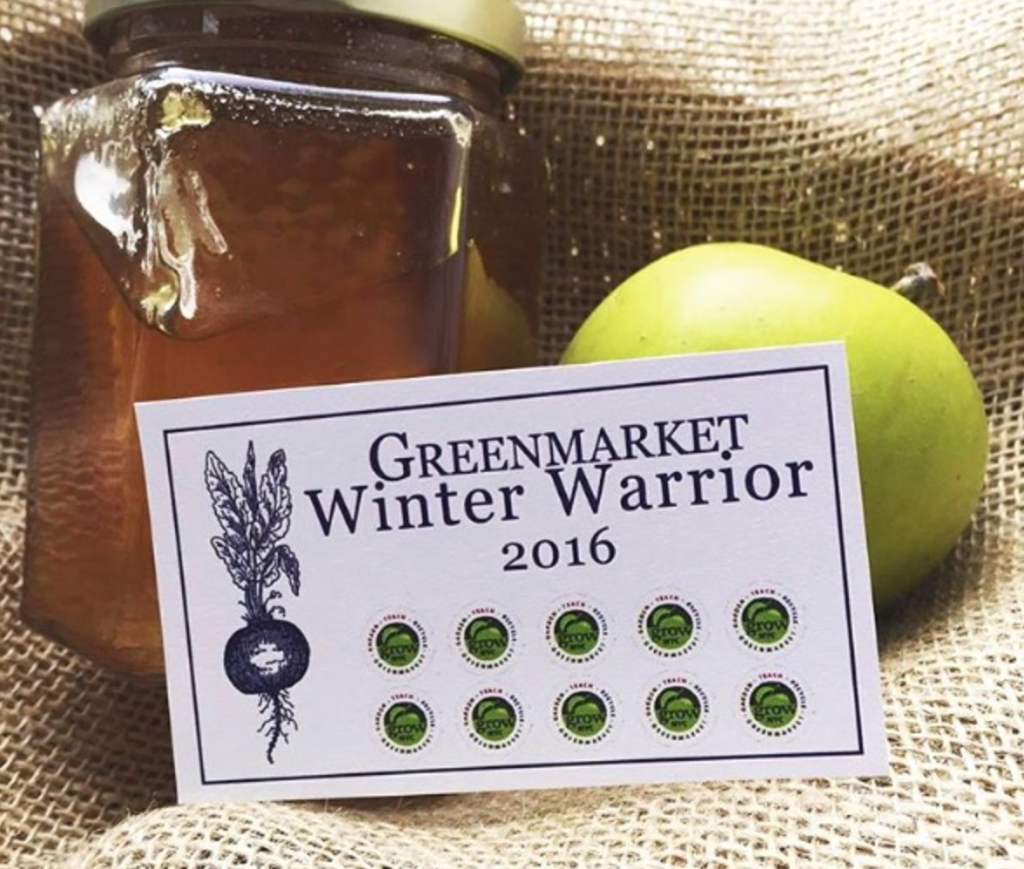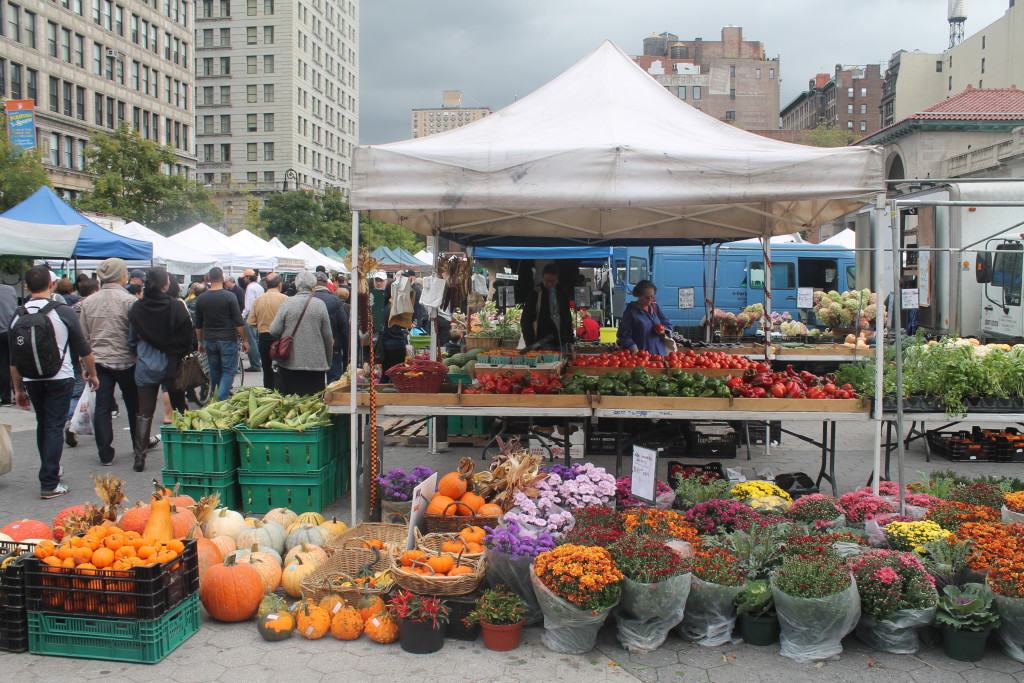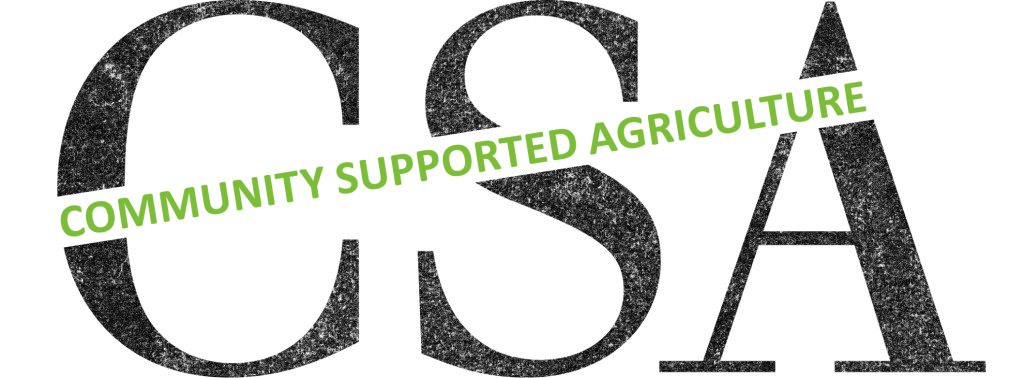During one of the coldest days of this winter season, I trudged up to the Union Square Farmers market to check out the offerings. The pickings were slim compared with the summer-time abundance. Still, I was able to find enough to make a substantial winter meal: short ribs from grass-fed beef, onions, carrots, daikon radish. A Korean-style stew was in my future.
My new favorite bakery (Greenpoint-based She Wolf) was open and selling Pullman loaves, perfect for French toast made with eggs from any number of vendors. I bought a large loaf with the intention of freezing one half and making sandwiches with the other.
If I wanted to (read: if I had a bigger freezer and refrigerator), I could have gotten seafood, prepared bone-broth, all sorts of fermented vegetables, and even a bottle of whiskey for post-prandial sipping.
Upon completing my circumnavigation of the market, I stopped at the GrowNYC information tent to get my “Winter Warriors” card punched. Since I visit the markets regularly, it won’t take long for me to earn the ten punches needed to qualify for a market prize.
GrowNYC initiated Winter Warriors in 2015 to encourage shoppers to visit the markets throughout the year, not just during the warmer months. It seems to me that the farmers and other vendors are the warriors, schlepping to and from the city in harsh weather to set up shop so we can buy fresh goods. Let’s show them some love.
Thinking about the meal I would be preparing with my market goods had me rifling through my recipe folder. It’s real, not virtual, and among the pages torn from magazines and newspapers are a number of recipes hastily scribbled on scraps of paper. These are my favorites and apparently I’m not the only one who values these endangered artifacts of our pre-internet way of exchanging recipes. Award-winning chef, journalist, cookbook author, and international restaurant consultant Rozanne Gold is curating an on-line series based on handwritten recipes. She’s looking for submissions. So find that recipe-stuffed folder or shoebox, scan or take a photo of a recipe and send it to Rozanne along with a 300-500 word essay about how it came to you. You’ll be helping to preserve a piece of our culinary history.
feature image via Edible Manhattan.




